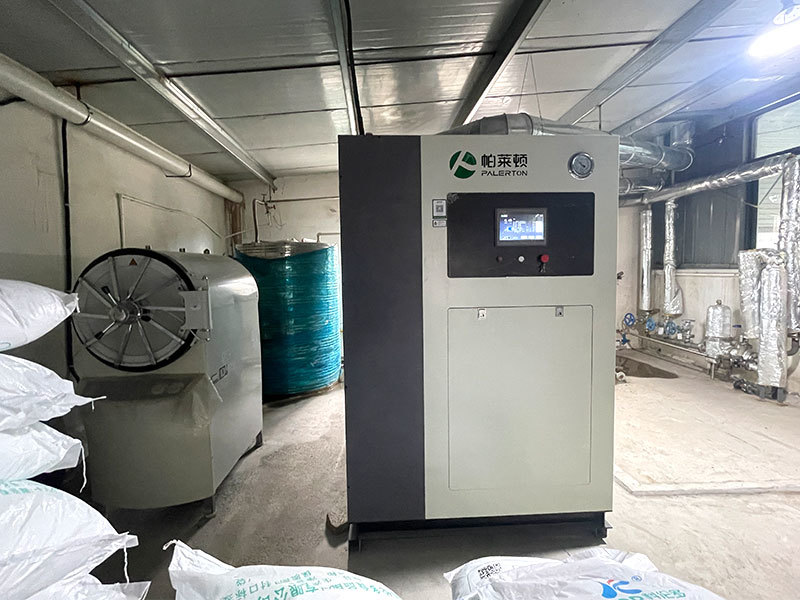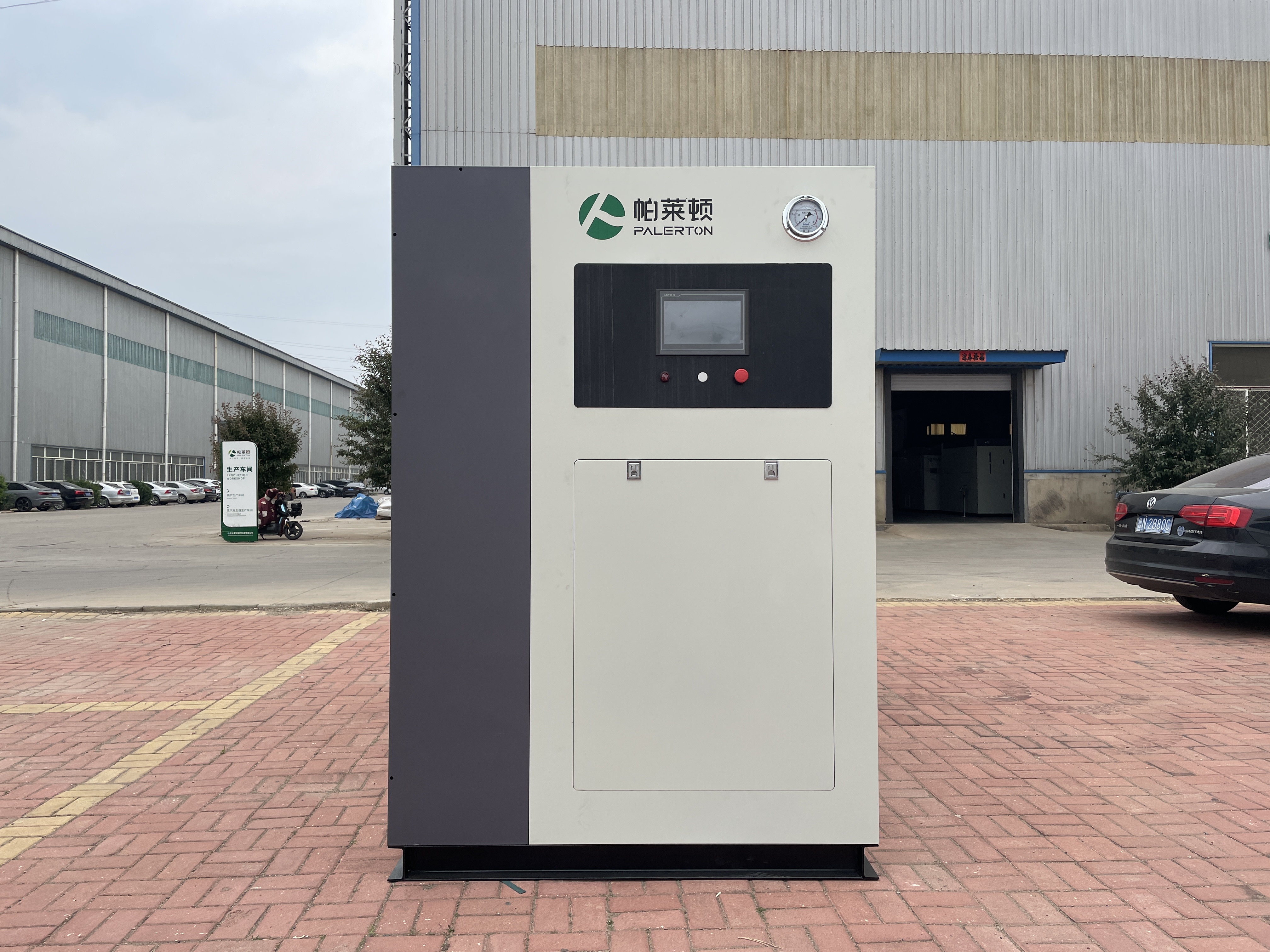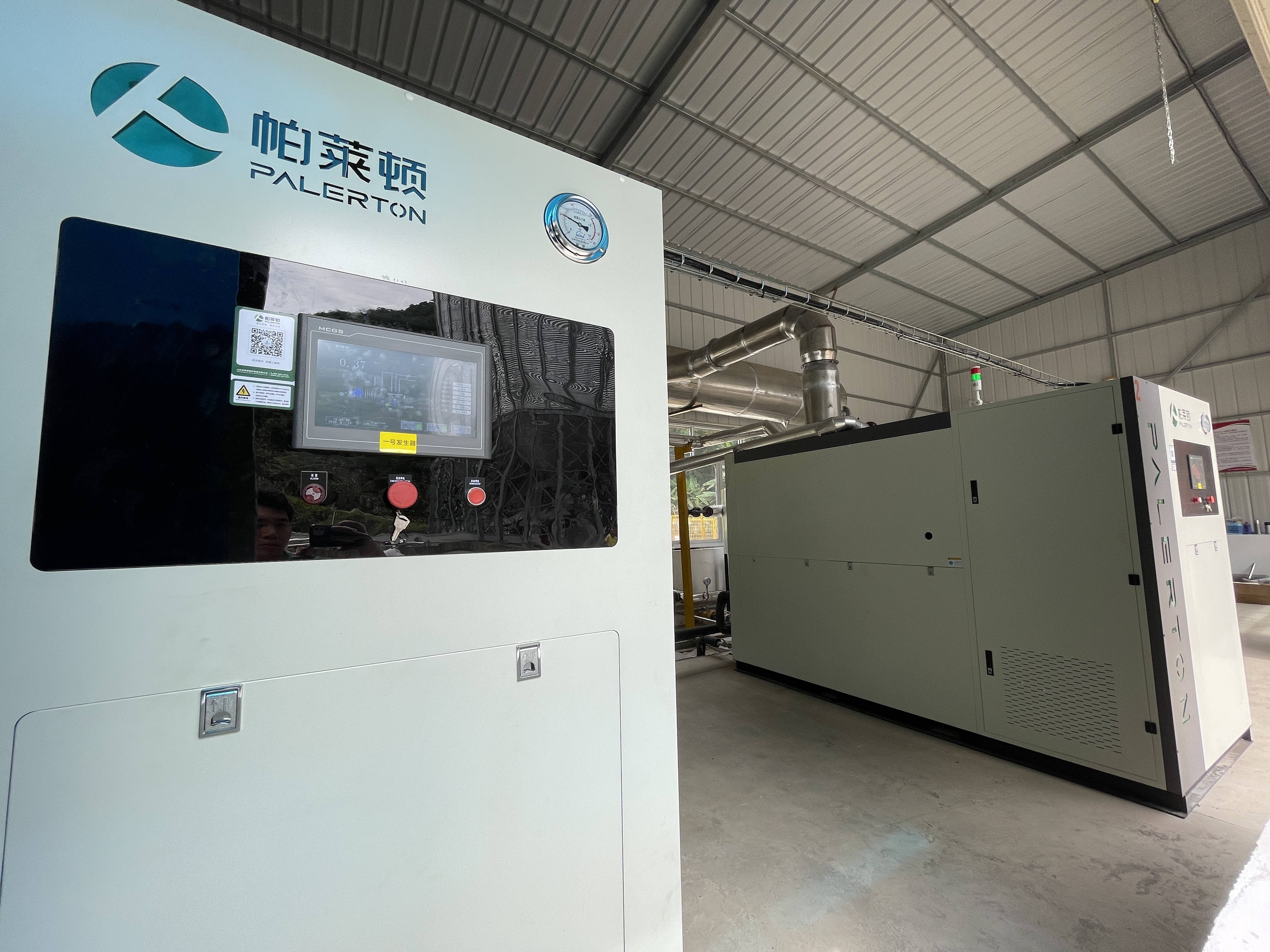
Premixing process of air and gas
During steam generator operation, the premixing of air and gas is a key step in ensuring combustion efficiency and stability. This process involves thoroughly mixing the gas with the combustion-supporting air in a specific proportion before it enters the combustion chamber, forming a uniform, combustible mixture. Good premixing ensures faster and more complete combustion, reducing energy waste and pollutant emissions, and laying the foundation for subsequent efficient combustion. The unique air chamber structure of the steam generator's water-cooled, fully premixed burner is key to achieving a thorough mixing of air and gas, ultimately achieving a uniform air-fuel ratio. Compared to traditional air chambers, this prevents incomplete combustion caused by localized over-rich or over-lean gas.
The unique air chamber structure of the steam generator's water-cooled, fully premixed burner is key to achieving a thorough mixing of air and gas, ultimately achieving a uniform air-fuel ratio. Compared to traditional air chambers, this prevents incomplete combustion caused by localized over-rich or over-lean gas. The intelligent control system provides intelligent assurance for the efficient and stable operation of the gas supply system. Combined with high-precision flow sensors and adaptive regulation algorithms, the system monitors parameters such as gas inlet pressure and pipeline flow in real time. When external operating conditions (such as fluctuations in inlet pressure and changes in steam load) change, the system dynamically compensates for flow by adjusting the opening of the gas valve group.
The intelligent control system provides intelligent assurance for the efficient and stable operation of the gas supply system. Combined with high-precision flow sensors and adaptive regulation algorithms, the system monitors parameters such as gas inlet pressure and pipeline flow in real time. When external operating conditions (such as fluctuations in inlet pressure and changes in steam load) change, the system dynamically compensates for flow by adjusting the opening of the gas valve group. When these systems work together to achieve a 100% burnout rate, significant environmental benefits are realized. First, complete combustion of the gas means virtually no toxic pollutants such as carbon monoxide (CO) are produced, significantly reducing atmospheric pollution. Second, complete combustion reduces the generation of nitrogen oxides (NOx) because the uniform gas mixture avoids localized high-temperature zones, which are the primary cause of NOx formation. This is crucial for mitigating environmental issues such as acid rain and photochemical smog. Finally, a 100% burnout rate means more complete energy utilization, significantly reducing gas consumption for equivalent steam output, thereby reducing CO2 emissions and contributing to achieving the "dual carbon" goals.
When these systems work together to achieve a 100% burnout rate, significant environmental benefits are realized. First, complete combustion of the gas means virtually no toxic pollutants such as carbon monoxide (CO) are produced, significantly reducing atmospheric pollution. Second, complete combustion reduces the generation of nitrogen oxides (NOx) because the uniform gas mixture avoids localized high-temperature zones, which are the primary cause of NOx formation. This is crucial for mitigating environmental issues such as acid rain and photochemical smog. Finally, a 100% burnout rate means more complete energy utilization, significantly reducing gas consumption for equivalent steam output, thereby reducing CO2 emissions and contributing to achieving the "dual carbon" goals.
Related News
For restaurant owners struggling to balance cost and quality, the combination of a steam generator and concentrated chicken broth is undoubtedly the most practical solution. No more anxiety about heat control, time consumption, or inconsistent output; a more worry-free way to maintain the core flavor and health of the soup – this is precisely the efficiency and peace of mind that restaurants need most right now.
Use a steam generator! Make brewing more than just about enhancing aroma and reducing costs!
Safety is a key advantage of steam generators. Traditional boilers are classified as special equipment, requiring regular professional annual inspections, and pose safety hazards due to excessive pressure. The humid environment of a brewing workshop further increases operational risks. In contrast, steam generators employ a low-pressure operation design, eliminating the need for special equipment operating permits. Equipped with multiple devices such as automatic pressure relief and water shortage protection, they can prevent safety accidents even during continuous production, making the brewing process safer.
The core value of the air mixer in the compound chamber slightly superheated steam generator
In terms of operational stability, the air mixer demonstrates robust regulation capabilities. The uniformly mixed gas-air mixture allows the burner to adapt to a wide load range. Whether operating at full peak load or maintaining low load, the equipment maintains stable combustion, avoiding operational disturbances caused by fluctuating operating conditions and ensuring consistent steam output.
What role does the steam generator play in preserved fruit production?
Equipment like the compound chamber slightly superheated steam generator aligns with the current pursuit of high quality and efficiency in food processing. Amid the surge in summer preserved fruit production, composite chamber micro-superheated steam generators are injecting strong momentum into the preserved fruit industry with their unique advantages, ensuring that every serving of preserved fruit is both delicious and safe, thanks to technological advancements.
Why Industrial Parks Need Steam Generators
Eliminate safety hazards to ensure continuous production Traditional boilers have large water volumes and high pressures, posing explosion risks. However, the compound chamber equipment utilizes an international safety design. The fully pressurized system's enclosed water capacity meets national standards and is equipped with over 40 intelligent protection devices. This ensures efficient and stable operation while fundamentally preventing leaks, over pressure, and other accidents. In processes requiring continuous steam supply, such as electronic component cleaning, the system can operate uninterrupted 365 days a year, completely eliminating the production losses associated with frequent downtime and maintenance associated with traditional equipment.
What is special about the compound chamber slightly superheated steam generator
In summary, the compound chamber slightly superheated steam generator , with its self-developed core components, precise steam quality control, and intelligent energy-saving system, excels in energy efficiency, stability, and adaptability, providing more efficient and reliable solutions for steam applications across various industries.



